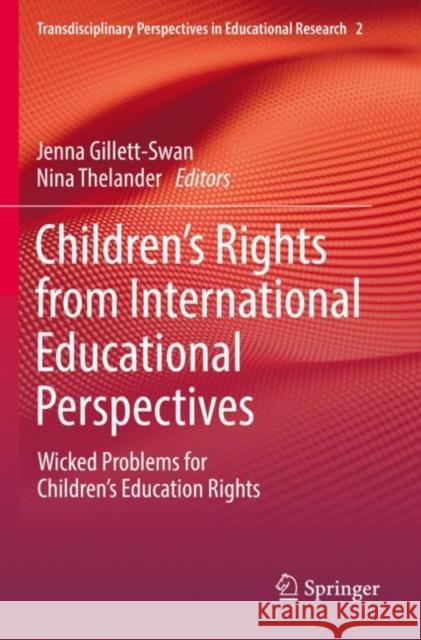Children’s Rights from International Educational Perspectives: Wicked Problems for Children’s Education Rights » książka
Children’s Rights from International Educational Perspectives: Wicked Problems for Children’s Education Rights
ISBN-13: 9783030808631 / Angielski / Miękka / 2022 / 254 str.
Children’s Rights from International Educational Perspectives: Wicked Problems for Children’s Education Rights
ISBN-13: 9783030808631 / Angielski / Miękka / 2022 / 254 str.
(netto: 305,96 VAT: 5%)
Najniższa cena z 30 dni: 308,41
ok. 22 dni roboczych
Dostawa w 2026 r.
Darmowa dostawa!
This book critically examines contemporary educational practices with a children’s rights lens. Through investigating the factors that contribute to (or hinder) the realisation of children’s rights in and through education in different contexts, it discusses how using a rights framework for education furthers the agenda for achieving international educational aims and goals. Using diverse international examples, the book provides a snapshot of the complexity of children’s rights and education. It draws on the expertise of international research teams from Australia, England, Finland, Italy, Mexico, Poland, Portugal, Scotland, Spain, Sweden, Switzerland, and the United States, and highlights wide-ranging interpretations of the same mandate across different national contexts. Beginning with a critical overview of the broader context of children’s rights in education, the book explores obligations for States and their representatives, tensions and convergences in implementation, and implications for teaching and learning. Using underutilised educational and theoretical concepts, it contributes to broadening understandings of children’s rights, education and associated theoretical frameworks. Despite a human rights framework emphasising the indivisibility, interrelatedness and interconnectedness of all rights, the ‘right to education’ (Article 28) dominates discussions about children’s rights and education. As such, equally important rights including the ‘aims of education’ (Article 29) are often less considered or absent from the conversation. Recognising that children’s education rights involve more than just access and provision, this book advocates for a much broader understanding of the nuances underpinning children’s education related rights. Chapter 10 is available open access under a Creative Commons Attribution 4.0 International License via link.springer.com.
This book critically examines contemporary educational practices with a children’s rights lens. Through investigating the factors that contribute to (or hinder) the realisation of children’s rights in and through education in different contexts, it discusses how using a rights framework for education furthers the agenda for achieving international educational aims and goals. Using diverse international examples, the book provides a snapshot of the complexity of children’s rights and education. It draws on the expertise of international research teams from Australia, England, Finland, Italy, Mexico, Poland, Portugal, Scotland, Spain, Sweden, Switzerland, and the United States, and highlights wide-ranging interpretations of the same mandate across different national contexts. Beginning with a critical overview of the broader context of children’s rights in education, the book explores obligations for States and their representatives, tensions and convergences in implementation, and implications for teaching and learning. Using underutilised educational and theoretical concepts, it contributes to broadening understandings of children’s rights, education and associated theoretical frameworks. Despite a human rights framework emphasising the indivisibility, interrelatedness and interconnectedness of all rights, the ‘right to education’ (Article 28) dominates discussions about children’s rights and education. As such, equally important rights including the ‘aims of education’ (Article 29) are often less considered or absent from the conversation. Recognising that children’s education rights involve more than just access and provision, this book advocates for a much broader understanding of the nuances underpinning children’s education related rights. Chapter 10 is available open access under a Creative Commons Attribution 4.0 International License via link.springer.com.











